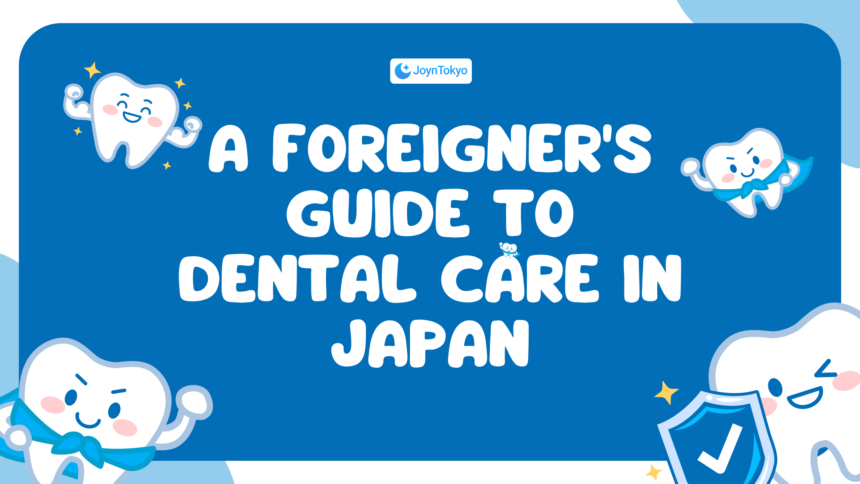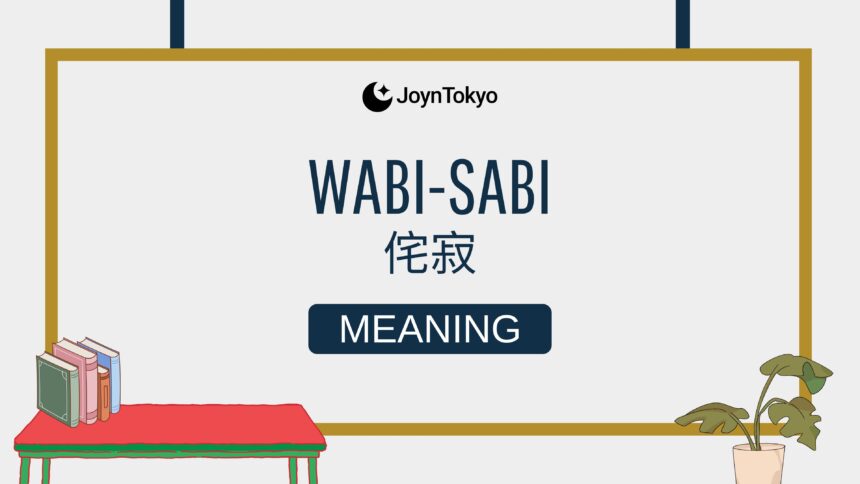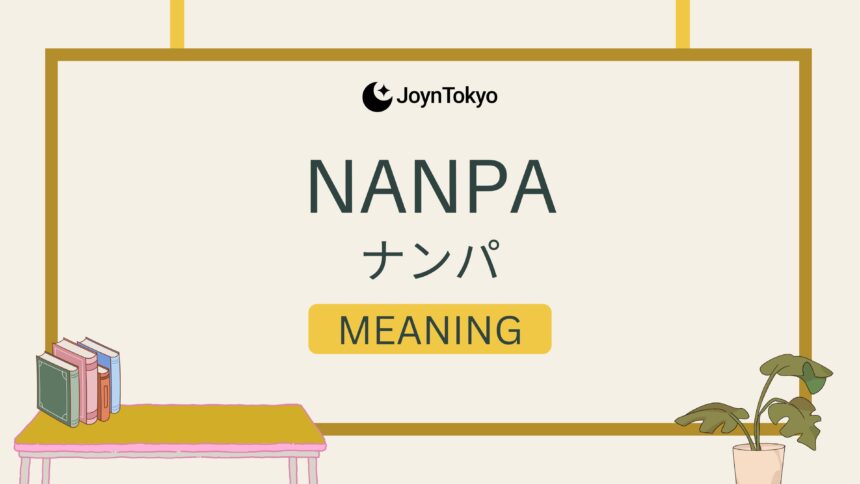If you’ve ever needed to find a dentist in Japan as a foreigner, you’ll know it can be daunting, especially if you are unfamiliar with the healthcare system and the Japanese language. Whether you need a routine checkup, emergency treatment, or specialized dental care, understanding how the process works can make your experience smoother. This guide will covers the types of dental treatments available, what to expect when visiting a clinic, insurance details, cost breakdowns, and useful Japanese phrases to help you communicate effectively.
Dental Treatment Options in Japan
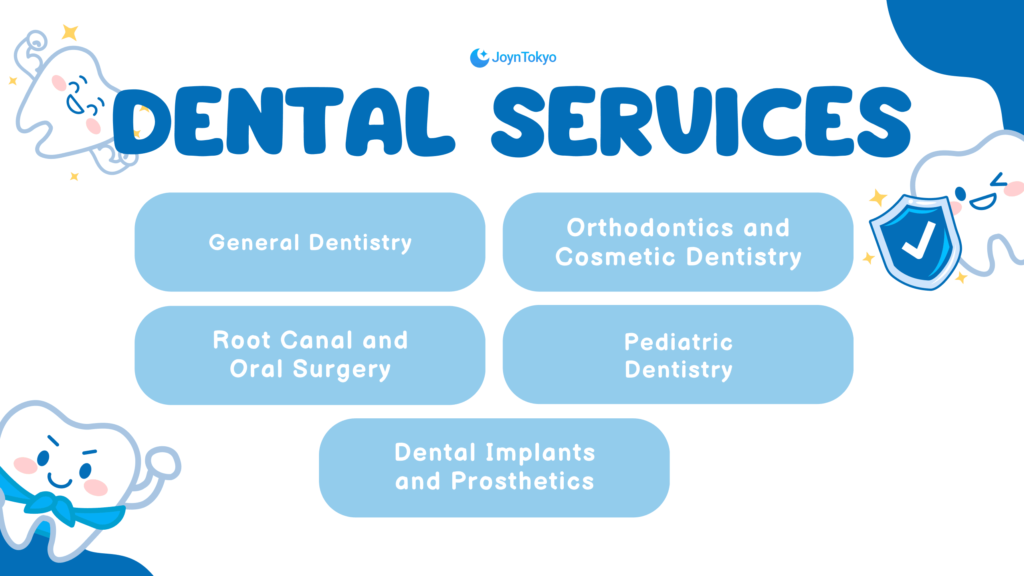
Japan offers a wide range of dental services, from routine checkups to advanced procedures. Many clinics provide both insurance-covered and private treatments, depending on the complexity of the procedure. Below are common dental treatments available:
General Dentistry
Routine checkups, cavity fillings, and teeth cleaning are common services at most clinics. Under Japan’s National Health Insurance (NHI), basic treatments such as fillings, simple extractions, and gum disease treatments are partially covered. Regular visits—typically every six months—help in early detection and prevention of dental issues.
Orthodontics and Cosmetic Dentistry
Braces, teeth straightening, teeth whitening, and veneers are widely available but usually not covered by insurance. The cost of braces can range from ¥300,000 to ¥1,000,000, while in-office teeth whitening services cost between ¥20,000 and ¥50,000 per session. It is advisable to compare prices among clinics before proceeding.
Root Canal and Oral Surgery
More complex procedures, such as root canals and wisdom tooth extractions, may require multiple visits. Root canals are covered by NHI, meaning insured patients pay only 30% of the cost. Wisdom tooth extractions can cost ¥5,000 to ¥30,000 per tooth, depending on complexity. Severe cases may require referrals to a hospital dental department, which could result in longer wait times.
Pediatric Dentistry
Japanese pediatric dentists emphasize preventative care, often using fluoride treatments and sealants to protect children’s teeth. Many clinics also use child-friendly behavioral techniques to ensure a stress-free experience for both parents and children.
Dental Implants and Prosthetics
Dental implants, partial and full dentures, as well as ceramic and metal crowns, are available in Japan. However, dental implants are not covered by insurance and can be expensive, typically costing over ¥300,000 per implant.
What to Expect at a Japanese Dental Clinic

Visiting a dentist in Japan follows specific processes. Understanding each step can help ease any anxiety you may have.
Making an Appointment
While some clinics accept walk-ins, it is best to book an appointment in advance. Appointments can usually be made by phone or online, though many clinics communicate only in Japanese. For English-speaking dentists, searching via online directories or expat recommendations is advised. Some clinics also provide email or web-form reservations.
Arriving at the Clinic
Upon arrival, present your health insurance card (if applicable) and fill out a medical questionnaire. First-time patients may need to provide additional dental history details. Japanese clinics are punctual, so arriving at least 10 minutes early is recommended.
Consultation and Examination
The dentist will conduct an examination, sometimes using X-rays. They will explain the diagnosis and treatment plan. If you are not fluent in Japanese, some clinics offer English-speaking staff or allow translation apps. Be sure to ask about treatment duration, expected costs, and follow-up visits.
Treatment and Payment
Depending on the procedure, treatment may begin immediately or require follow-up visits. After treatment, payments are processed at the reception. With NHI, patients pay only 30% of the total cost. If paying out-of-pocket, request a detailed cost breakdown beforehand. Some clinics accept credit cards, but most prefer cash payments.
Insurance and Cost Breakdown
Most foreign residents in Japan are enrolled in NHI or Social Health Insurance (SHI), both of which cover 70% of basic dental treatments. However, procedures such as orthodontics, advanced cosmetic dentistry, and dental implants are not covered.
| Treatment | Estimated Cost | With Insurance (30%) |
|---|---|---|
| General checkup & cleaning | ¥3,000 – ¥6,000 | ¥900 – ¥1,800 |
| Cavity filling | ¥5,000 – ¥15,000 | ¥1,500 – ¥4,500 |
| Tooth extraction | ¥10,000 – ¥30,000 | ¥3,000 – ¥9,000 |
| Root canal treatment | ¥30,000 – ¥60,000 | ¥9,000 – ¥18,000 |
| Braces | ¥300,000 – ¥1,000,000 | Not Covered |
| Teeth whitening | ¥20,000 – ¥50,000 | Not Covered |
Useful Japanese Phrases for Dental Visits
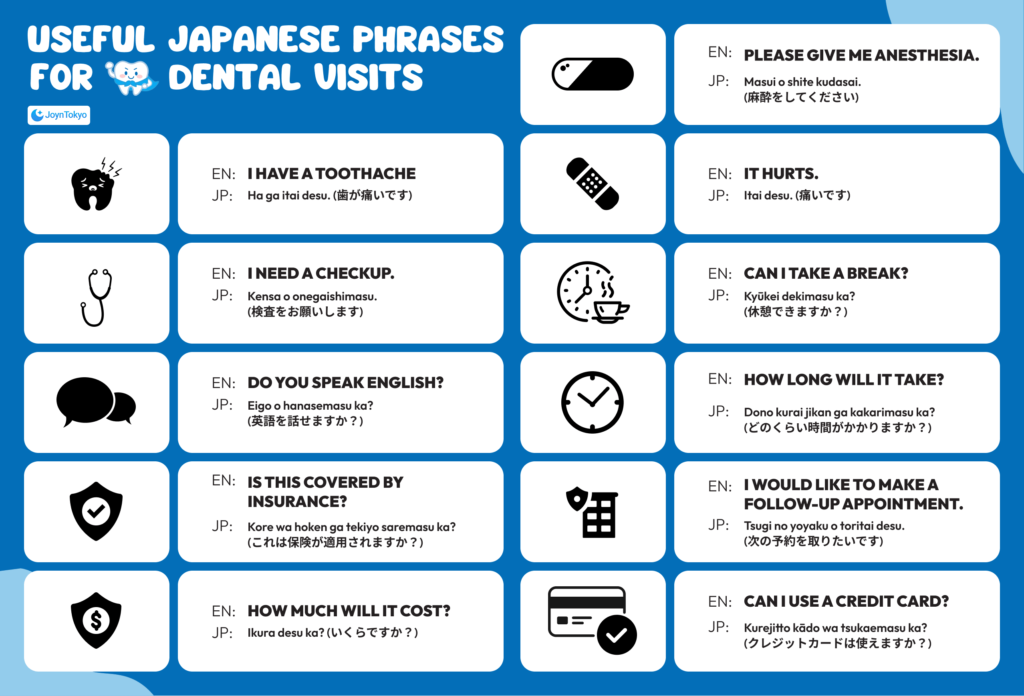
Here are some essential Japanese phrases to help you communicate during your visit:
- I have a toothache. → Ha ga itai desu. (歯が痛いです)
- I need a checkup. → Kensa o onegaishimasu. (検査をお願いします)
- Do you speak English? → Eigo o hanasemasu ka? (英語を話せますか?)
- Is this covered by insurance? → Kore wa hoken ga tekiyo saremasu ka? (これは保険が適用されますか?)
- How much will it cost? → Ikura desu ka? (いくらですか?)
- Please give me anesthesia. → Masui o shite kudasai. (麻酔をしてください)
- It hurts. → Itai desu. (痛いです)
- Can I take a break? → Kyūkei dekimasu ka? (休憩できますか?)
- How long will it take? → Dono kurai jikan ga kakarimasu ka? (どのくらい時間がかかりますか?)
- I would like to make a follow-up appointment. → Tsugi no yoyaku o toritai desu. (次の予約を取りたいです)
- Can I use a credit card? → Kurejitto kādo wa tsukaemasu ka? (クレジットカードは使えますか?)
Ensuring a Smooth Dentistry Experience in Japan
Japanese dental care is high quality, but navigating the system as a foreigner might need you to prepare a little bit. Understanding treatment options, knowing what to expect, and learning key phrases will help ensure a smoother experience. If possible, seek an English-speaking clinic for effective communication. By taking these steps, you can maintain good oral health while living in Japan with minimal stress.

